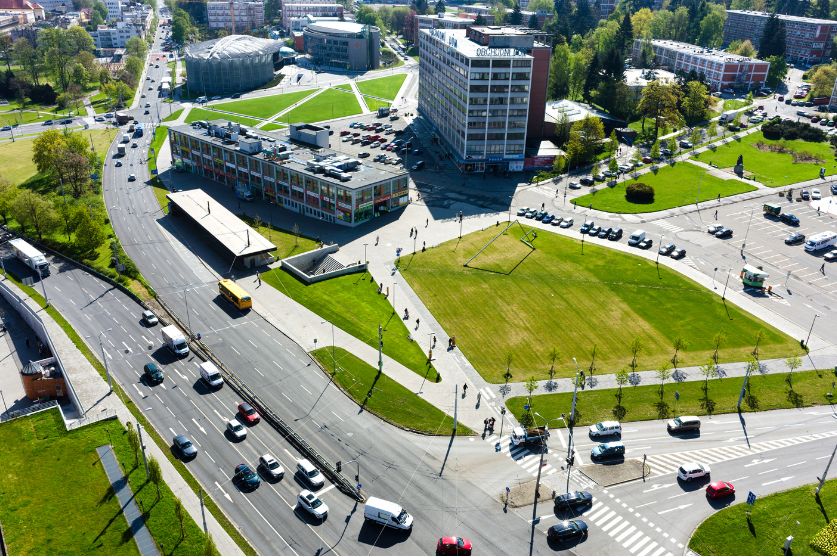Inclusive urban environments ensure everyone can move through their surroundings safely and comfortably.
City infrastructure must adapt to support individuals with mobility challenges. Improving accessibility benefits people with physical disabilities and society as a whole. By prioritizing inclusive urban design, we can foster a stronger sense of community and belonging; here’s how.
Bridging the Accessibility Gap
Addressing infrastructure gaps can significantly enhance the quality of life for those with mobility challenges. Many urban areas still lack sufficient ramps, accessible public transport options, and designated parking areas. These inadequacies can lead to frustration and isolation, making it vital to advocate for changes prioritizing accessibility. A commitment to improving infrastructure can lead to a more inclusive environment, ensuring that people of all abilities can access essential services and participate fully in community life.
Incorporating universal design principles into urban planning can bridge this accessibility gap. This approach ensures that buildings, parks, and transportation systems are created with everyone’s needs in mind, minimizing barriers to access.
For example, installing automatic doors, tactile paving, and accessible signage fosters an environment where all individuals can easily navigate their surroundings. Incorporating universal design principles into urban planning can bridge this accessibility gap. This approach ensures that buildings, parks, and transportation systems are created with everyone’s needs in mind, minimizing barriers to access.
Related Post: Optimus: Tesla’s Groundbreaking Humanoid Robot
The Role of Vehicles in Promoting Urban Accessibility
Access to suitable vehicles is integral for individuals with mobility challenges. Wheelchair-accessible vehicles provide independence that enhances their quality of life. These vehicles ensure that individuals can easily travel to various destinations without worrying about accessibility limitations. Importantly, when individuals utilize a Motability allowance, they are more likely to opt for wheelchair-accessible vehicles tailored to their specific requirements.
When selecting a vehicle, features such as rear entry points are crucial. These design elements simplify entering and exiting the vehicle for individuals with mobility challenges. Many users report that this design significantly reduces the physical strain of getting in and out of a car. Prioritizing such designs improves the user’s experience and demonstrates a commitment to creating accessible transportation options. Focusing on the practical features of wheelchair-accessible vehicles means cities can enhance mobility and independence for all users.
Accessibility in vehicles extends beyond design features. Safety is another critical consideration. Enhancements such as secure wheelchair tie-downs, accessible seatbelts, and additional safety features provide peace of mind for users during travel. Ensuring that vehicles meet rigorous safety standards is paramount. Innovations such as automated lifts and voice-activated controls can further improve the experience, showcasing the importance of technology in enhancing accessibility.
Local authorities can collaborate with vehicle manufacturers to ensure available vehicles are accessible and equipped with the latest technology to aid users. Fostering partnerships between urban planners and vehicle manufacturers helps cities to create a seamless transport experience. This collaboration can improve support systems for maintenance and service, ensuring users have reliable mobility options.
Related Post: The Best Ways to Bring Your Car Insurance Costs Down
Community Initiatives Supporting Mobility Needs
Communities play a vital role in advocating for accessible infrastructure and transportation solutions. Collaborative efforts among local governments, advocacy groups, and citizens can drive meaningful changes in urban environments. Grassroots movements have historically been effective in raising awareness, seeking funds, and pushing for policies that prioritize accessibility.
For instance, local advocacy groups can conduct surveys to identify specific accessibility barriers within the community. These surveys can provide valuable insights into the needs and desires of users with mobility challenges. This data-driven approach equips advocates with the necessary information to lobby for change effectively. Presenting clear, quantifiable needs to city planners enhances the likelihood of implementing meaningful improvements.
Public forums and community meetings also offer opportunities to discuss accessibility concerns, ensuring that all voices are heard. Engaging with residents allows community leaders to gather diverse perspectives, fostering a greater understanding of the specific challenges faced by individuals with mobility needs. By highlighting personal experiences and stories, advocates can foster empathy and drive action within the community.
The Impact of Community Engagement on Accessibility Initiatives
Community engagement is crucial in developing effective accessibility initiatives within urban environments. When individuals with mobility challenges, their families, and advocates actively participate in the planning and decision-making processes, they provide valuable insights that can shape more effective infrastructure solutions. This direct input is instrumental in identifying barriers that may not be apparent to policymakers and urban planners who may not experience these challenges firsthand.
Engaging the community creates an opportunity for meaningful dialogue around accessibility needs and challenges. Local forums, workshops, and focus groups can serve as platforms for individuals to share their experiences, enabling planners to understand better what improvements are necessary. These discussions can also highlight innovative ideas that prioritize inclusivity and accessibility, fostering a culture of co-creation in urban development.
The Importance of Policy and Legislation
Implementing effective policies is crucial for creating sustainable urban accessibility solutions. Governments at all levels must commit to enacting laws that promote inclusive practices within urban planning. Policies should prioritize accessibility as a fundamental right, ensuring that infrastructure projects consider users’ needs with mobility challenges from the outset.
Legislation can mandate that all newly constructed buildings comply with universal design standards. Cities can create environments that meet the needs of all residents by establishing clear guidelines for accessibility. Furthermore, existing infrastructure should be evaluated and updated to align with modern accessibility standards. This proactive approach ensures that urban areas become progressively more inclusive over time.
Funding is another critical aspect. Local governments should allocate resources to support accessibility initiatives. This funding can be directed towards improving public transport systems, retrofitting existing infrastructure, and developing community-focused projects. By ensuring that financial resources are available for accessibility improvements, cities can demonstrate a genuine commitment to fostering inclusion.
Future Directions for Urban Mobility
The future of urban mobility hinges upon continued investment in accessible infrastructure and vehicles. As cities develop, the integration of technology will further enhance accessibility options. Innovations such as real-time transport information can revolutionize how individuals navigate urban spaces, facilitating smoother journeys for users with mobility challenges.
Addressing climate change through sustainable transport solutions must also encompass accessibility considerations. As cities transition to green initiatives, ensuring that new public transport systems and vehicles are accessible remains paramount. This dual focus addresses environmental concerns and ensures that mobility remains inclusive.
Research into the latest trends in mobility technology will help cities stay ahead of the curve. Innovations such as electric vehicles and autonomous transport options have the potential to provide enhanced accessibility solutions for those with mobility challenges. By investing in research and development, cities can remain at the forefront of creating inclusive mobility solutions.
Collaboration will be key in driving these initiatives forward. Stakeholders, including government, private sector partners, and community organizations, must work together to implement comprehensive strategies that prioritize access for all. This united approach will ensure that urban environments become increasingly navigable, allowing all individuals to thrive within their communities.
Ultimately, committing to inclusive infrastructure, vehicle design, and community engagement can help cities adapt to meet the needs of users with mobility challenges. The journey towards urban accessibility continues, requiring dedication, innovation, and collaboration from everyone involved. As infrastructure grows, so will the experiences and opportunities available to all community members, fostering a more equitable and inclusive urban environment.

